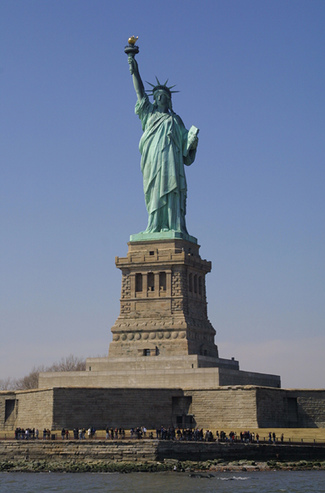Since January, President Trump’s travel ban has triggered ongoing legal and political chaos. It’s been hard to keep up – one minute the order was to be instated, only for a court to stay it in full or in part. But, the order is now in force, for the next 90 days at least. The constant back-and-forth has paused for now, allowing space for reflection. This blog asks, what has happened so far, what’s to come, and should we fear for our health as a result?
Who is banned?
The original order barred entry of nationals of seven majority-Muslim countries (Iran, Iraq, Libya, Somalia, Sudan, Syria, and Yemen) for at least 90 days; suspended the refugee resettlement program for 120 days; cut the total number of refugees admitted for resettlement to 50,000 in 2017, and imposed an indefinite ban on Syrian refugees. Refugees from a minority religion in their home country, e.g. Christians, would be prioritized. The order also mooted that a list of countries from which entry would be frozen be decided.
Almost immediately, organizations, states and individuals filed requests for a stay. And within a week of its issuance, a federal court stayed the order nationwide. In response, the government amended the order with targeted changes: Iraq was removed from the ban and preference for minority religions was removed. Yet again the order was suspended by courts, finally finding its way to the Supreme Court.
The Supreme Court reinstated the order with respect to foreign nationals who “lack bona fide relationship” with a person or entity in US. A “close familial relationship” is required or a relationship with an entity that is “formal, documented, and formed in the ordinary course” rather than to evade the order, such as a university student or employee.
In light of the Supreme Court decision, the government published guidance to its agencies to enforce the order. It did not include grandparents, grandchildren, aunts, uncles, nieces, nephews, cousins, siblings in law as close familial relationship. Further, having a resettlement agency in US provide formal assurance for a refugee is not enough. But, in State v. Trump, the government’s interpretation was found an “unduly restrictive” reading of “close familial relationship”, and the listed classes were included. This interpretation was left in place (for now) by the Supreme Court. The Supreme Court will decide on the cases in October session unless the ban has already been lifted.
And why?
The original executive order was called “Protecting the Nation from Foreign Terrorist Entry into the United States.” The express basis for the order was the need to prevent “terrorist or criminal infiltration by foreign nationals.” Yet, the administration did not present empirical evidence between the selected nationalities and the commission of terrorist attacks in the US. The Administration asserts that the temporary travel ban is in the interests of national security, and designed to strengthen vetting procedures from countries at risk of producing terrorists.
Opponents of the order argue that it amounts to discrimination, and preferential treatment of religion contrary to the constitution (the establishment clause). In Hawaii v. Trump, the Court had found that the order exceeded President’s authority under 8USC §§1182(f) and 1185(a) and motivated by anti-Muslim goal.
Direct and Indirect Health Impacts
Forced separation
The travel ban has had documented impacts on the mental and physical health of affected children, families and individuals. In a recent Amnesty International report on the ban, an informant tells of the health impact of feeling compelled to leave his baby in Malaysia for two months while he arranged an emergency visa:
Anxiety
All informants in the report speak of the underlying anxiety and concern they have for their future and that of their families. This uncertainty will likely have physiological impacts on those affected and those close to them. In particular, the manner in which the order was issued promoted discord: with no warning it was ushered in, meaning persons with valid visas were denied boarding or entry on arrival. The result was chaos and distress at major airports as citizens protested the sudden events. It has been estimated that immigration officials denied entry to at least 141 people in the first week the order was issued.
Attracting medical professionals
The US faces dire shortages of health workers. Yet, the uncertainty caused by the travel ban discourages workers from engaging in the laborious process of getting a visa to the US. This has implications not just for workers from the listed countries, but also workers from countries who may feel at risk of targeting at a later point. The most qualified applicants may prefer to immigrate to alternative destinations that are more welcoming.
This sad saga in US politics is far from over. Will the ban be lifted in 90 days or reinforced? Will the Supreme Court have the opportunity to decide on the case? The suggested health impacts are hard to quantify at this juncture and more data is required. However, what is sure, is that in many parts of the world, the image of the US as a beacon for the “tired, huddled masses” has slipped.



